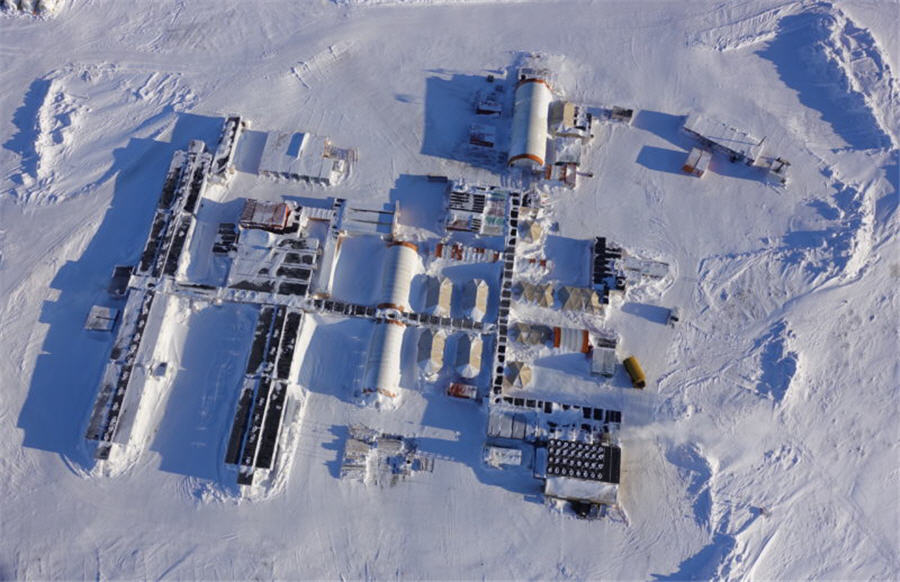
Agnico Eagle Mines is doubling down this year on Nunavut, Canada’s least developed territory, betting that the high-grade gold ores and slim competition there will offset the risks of digging in the remote location in the far north.
For miners desperate to shore up reserves, the choice is often between safer jurisdictions with inhospitable geographies and easier-to-reach ores in politically challenging locations.
Investors have been rewarded for backing Agnico’s strategy. The company’s shares have surged 71% over the past five years, trouncing the 0.3% gain in the benchmark S&P/TSX Global Gold Index. They believe the company is making the right move again, thanks to high-grade ores in Nunavut and Agnico’s 12 years’ experience in the Arctic territory.
For miners desperate to shore up reserves, the choice is often between safer jurisdictions with inhospitable geographies and easier-to-reach ores in politically challenging locations
“Based on the geological potential, and the ability to grow the size of the deposit… and given there hadn’t been a lot of exploration work done, we concluded it was a good place to do business,” Agnico CEO Sean Boyd told Reuters in an interview. “But it certainly hasn’t been easy.”
The Toronto-based company begins operating the Meliadine mine and Amaruk, a satellite deposit near its closing Meadowbank mine, this year, lifting output to a record 2 million ounces by 2020 from 1.6 million last year.
Meliadine is located close to Nunavut’s eastern shore on the Hudson Bay, about 25 kilometers (15.5 miles) north of the hamlet of Rankin Inlet, while Amaruk is further inland, 300 km west of Hudson Bay and almost 150 km of the nearest hamlet of Baker Lake.
Meliadine will yield about 7 grams of gold (0.2 ounce) per tonne of ore, compared with the company’s 2.5-gram average, while Amaruk is expected to yield between 4 and 5 grams, Boyd said. The gold ore grade in the new mines is higher than at Meadowbank.
“The high grade allows them to make up some of the ground lost to higher costs,” said Craig Jerusalem, portfolio manager at CIBC Asset Management, which owns Agnico shares. “And another company wouldn’t be able to move into the region and have the success that Agnico has had without investing considerable time and money.”
Agnico shares trade at 11 times forward cash flow, compared with Barrick Gold Corp’s 8.6 and Newmont Goldcorp’s 9.1, according to Refinitiv.
Nunavut is not on Canada’s hydroelectric power grid, so diesel-powered energy is the biggest ongoing cost, at 30 to 35 Canadian cents per kilowatt hour. That compares with about 5 cents at Agnico’s Quebec mines, which account for over half the company’s production, Boyd said.
The company is hopeful of driving down energy costs.
A push for C$1.2 billion ($898 million) power line extension north from Manitoba province has yielded few results, but the federal government’s approval of a two-year study in February is raising some hopes.
Agnico has also been researching wind power but Dominique Girard, vice president for its Nunavut operations, said it would need government funding.
With temperatures that plunge to as low as -50°C (-58°F), all non-perishable supplies and equipment for the year must be shipped between July and October, or be specially airlifted in at high cost, Girard said.
And there are more costs.
Nunavut is not on Canada’s hydroelectric power grid, so diesel-powered energy is the biggest ongoing cost, at 30 to 35 Canadian cents per kilowatt hour
Agnico has already spent about C$200 million building roads, budgeted C$500 million to train Inuit workers and will pay C$450 million in royalties to Inuit communities over 15 years.
But, with most of its big development spending behind it, Agnico can weather a decline in gold prices, although a fall to below $1,200 an ounce would hit future investment in Nunavut, according to the company. Spot gold was trading at $1,268.76 an ounce on Tuesday.
“This year is the inflection year,” said Maria Smirnova, senior portfolio manager at Sprott Asset Management, which holds Agnico shares. “They’re transitioning from burning cash last year to these projects now contributing to positive cash flow, despite the continuing costs.”
($1 = 1.3362 Canadian dollars)
(By Nichola Saminather; Editing by Denny Thomas and David Gregorio)